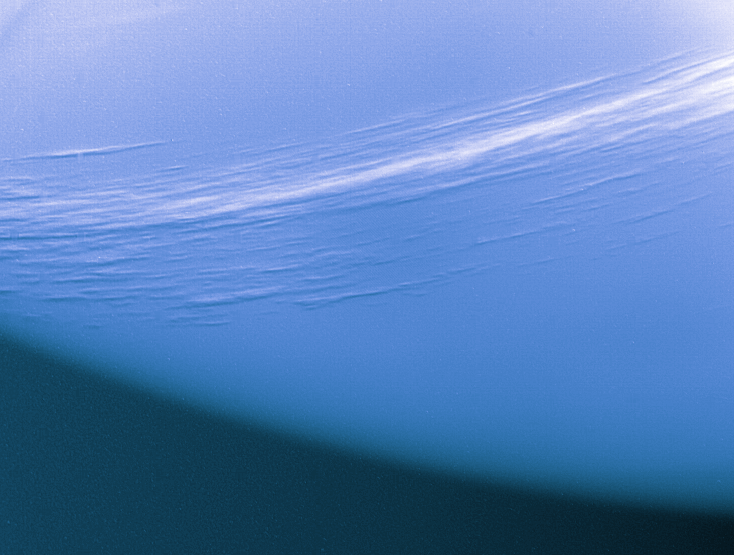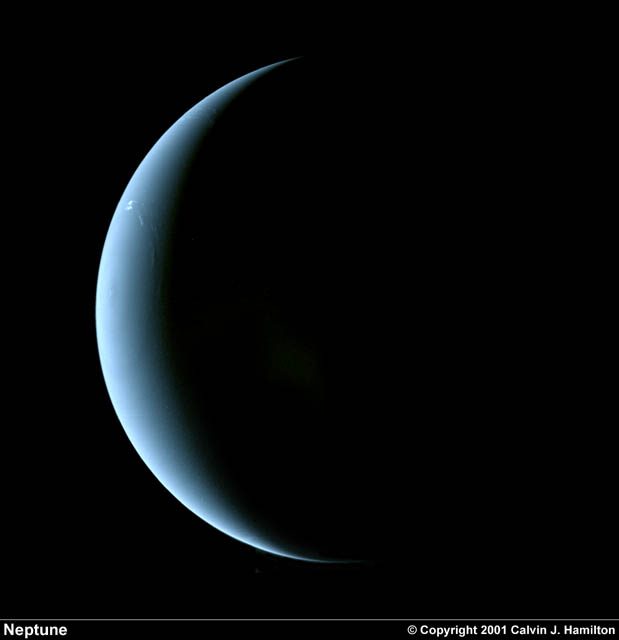Page name:
Neptune_astronomy [Exported view]
[RSS] 2007-12-17 23:14:15
|
# of watchers: 0
|
Fans: 0
| D20: 4 |
Neptune


Voyager 2, a space probe, passed within 4900 kilometers of Neptune in 1989. From the data collected, we know that Uranus and Neptune are very similar in composition. Neptune has a mantle of liquid hydrogen while the atmosphere is a combination of ammonia, helium, and methane. In the upper atmosphere, methane freezes and forms an ice cloud which casts a shadow on the clouds below. Neptune has bands in its atmosphere where wind speeds may reach 2000 kilometers per hour! Neptune has large, dark ovals on its surface which astronomers believe are hurricane-like storms. Neptune generates more heat than it absorbs from the Sun, indicating it has its own internal heat source. Neptune has a very strong magnetic field. It also has a ring system consisting of four rings; two thin and two thick. The rings are composed of dark particles which vary in size. Neptune has at least eight natural satellites, four of which orbit within the rings. The largest satellite is Triton. Due to Triton's retrograde orbit, its density, and its composition, astronomers theorize that Triton was not originally a satellite of Neptune. They theorize that Triton was captured by Neptune's gravitational pull, forcing it into an orbit around the planet. Triton is thought to be a combination of rock and ice. Its surface temperature is -245 degrees Celsius, and it has a thin atmosphere of nitrogen and methane.


Back to
The Planets
Back to
Astronomy
Created by [
Jivo]
| Show these comments on your site |
 Stumble!
Stumble!


